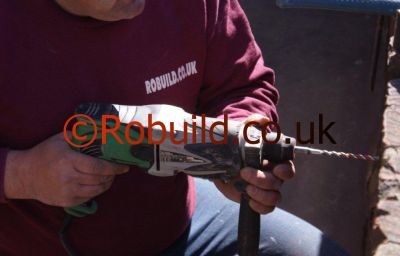When you fix something up, you want to make sure it’s not going to fall down as soon as your back is turned. So it’s important you use the right type of fixing for the material on which you plan to put your fitments. The correct fixing method depends not only on the construction of the wall but also on the weight and nature of the object to be supported.

There are two basic types of wall- solid (brick or block built) or hollow partition. From the point of view of wall fixings cavity construction can be regarded as solid brickwork. If you tap the surface of your wall you will get either a solid or hollow response depending on the construction. Remember where a thick plaster coating is applied to brickwork it is important to get your fixing securely into the brickwork for maximum support. Hollow types consist of sheets of plasterboard or laths and plaster fixed to a timber framework and are mainly used for partitioning. Decide exactly where you want to place the fitment on the wall and then mark the fixing holes accordingly. Drill holes in the fitment first, if not already made. Don’t attempt to fix heavy items on partition walls unless you can drill into the framework of the partition.
Drilling into a wall
For this job you will need a tungsten carbide-tipped masonry drill bit fitted into the chuck of an electric or hand drill. The tough carbide tip ensures a long life for the drill bit even with the rapid wear and tear involved in drilling masonry. If your drill has more than one speed, operate it as slowly as possible. If you find a section is extremely hard, such as a concrete lintel above a door or window, you may need a hammer action electric dri1l or a drill fitted with a hammer attachment. The hammer drill bit is driven into the wall by turning and hammering simultaneously.
